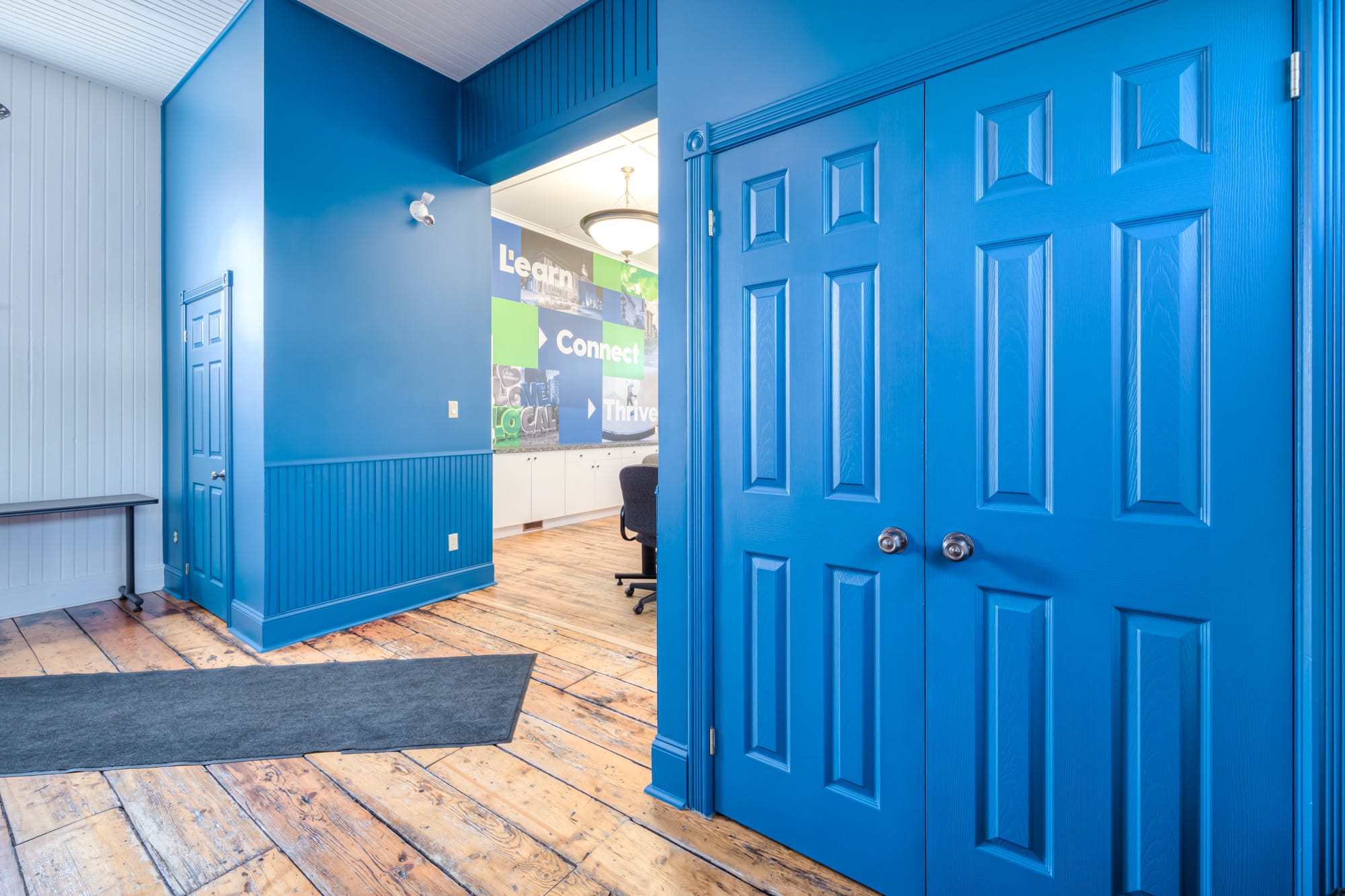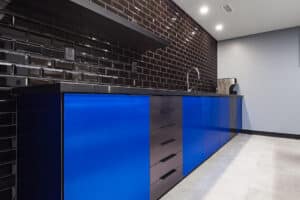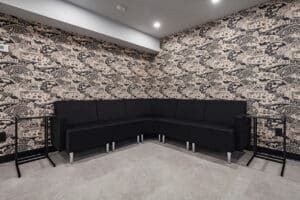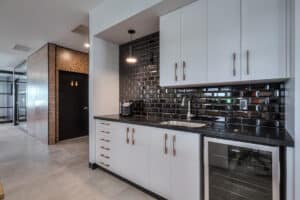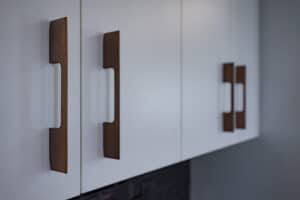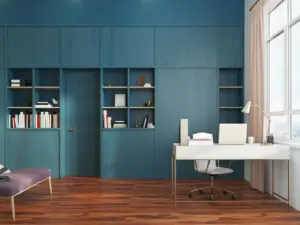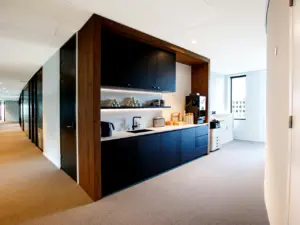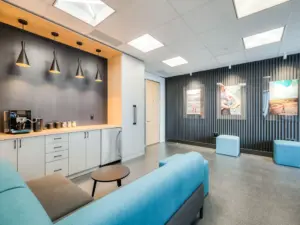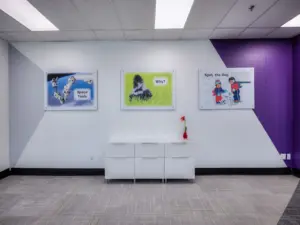Storage in modern office spaces is no longer just about bulky cabinets and endless shelves. The right storage furniture can transform an office by increasing efficiency, reducing clutter, and even contributing to a more flexible, collaborative environment. These innovative office storage solutions prove that practicality and design can go hand in hand.
1. Modular Storage Cubes on Sliding Tracks
A storage wall that moves? Absolutely. Modular storage cubes mounted on sliding tracks offer a fully customizable system that adapts as office needs evolve. Units like these can function as:
- Semi-private partitions
- Filing systems
- Display shelving for branding or office essentials
Best part about it? They can be easily reconfigured without major renovations.
2. Storage Benches with Hidden Compartments
Think beyond the typical bench. These benches offer a dual-purpose solution, providing seating while concealing compartments underneath. Ideal for waiting areas, break zones, and collaboration spaces. Options include hydraulic lifts or pull-out drawers for seamless access to stored items.
3. Smart Storage Lockers with Wireless Charging
Traditional lockers get a tech upgrade with built-in wireless charging and app-controlled access. Secure storage units are perfect for modern workplaces where employees need:
- Places to store personal belongings safely
- Charging stations for phones, tablets, and laptops
- Temperature-controlled compartments for tech storage
Smart storage lockers are especially beneficial for shared workspaces and hybrid office models.
4. Rotating Storage Columns
A vertical storage solution that maximizes organization in compact offices. Rotating storage units spin 360°, making it easy to access multiple compartments without taking up much space. Perfect for storing files, office supplies, or personal items.
5. Desks with Expandable Storage Wings
Hybrid offices require adaptable furniture. Desks with expandable storage wings offer hidden trays and compartments that extend when needed and retract when not in use. This keeps workspaces clutter-free, efficient, and minimalist in design.
6. Wall-Mounted Storage Grids with Magnetic Accessories
For workspaces that demand flexibility, wall-mounted grids with repositionable magnetic shelves and accessories are a game-changer. You can even have them function as whiteboards, organizers, and adjustable shelving for changing storage needs.
7. Suspended Storage Pods
Storage doesn’t always have to be on the floor. Ceiling-mounted storage pods descend at the push of a button, keeping essentials accessible while freeing up valuable floor space. Best suited for offices with high ceilings, limited square footage, and a need for a clutter-free aesthetic.
8. Storage Partitions with Built-In Whiteboards & Planters
Multifunctional furniture is the future. Storage partitions double as writable whiteboard surfaces for brainstorming, shelves for books and office supplies, and planter boxes for greenery to enhance office aesthetics.
9. Retractable Storage Panels
Hidden storage meets sleek design. Retractable storage panels provide a space-saving solution for offices where minimalism is key. Slim sliding panels reveal hidden compartments perfect for office supplies, files, or tech accessories.
10. Convertible Storage Coffee Tables
A breakroom essential that does more than just hold coffee cups. Storage coffee tables feature concealed compartments to store charging cables, office supplies, or meeting materials—a stylish and practical way to maintain a polished workspace.
11. Lockable Rolling File Ottomans
Mobility meets security. Rolling ottomans provide seating while offering lockable storage for important documents. Perfect for executive offices, conference rooms, and shared workspaces where security is a priority.
12. Under-Table Storage Hammocks
A clever, discreet way to keep workspaces organized. Fabric hammocks mounted under desks provide space for bags, cables, and documents—an easy solution to keep floors clear and desks clutter-free.
The Future of Office Storage
Office furniture is no longer just about function—it’s about creating an environment that adapts, evolves, and enhances productivity. Cutting-edge storage solutions make organization effortless while maintaining a sleek, modern aesthetic. Whether through smart technology, modular design, or multi-functionality, the future of office storage is about making every inch count.
Need to rethink office storage? Innovations like these prove that smart design can create workspaces that are both beautiful and highly functional.
Frequently Asked Questions (FAQ):
What are the key benefits of having flexible office furniture in modern office spaces?
Adaptability: Flexible furniture can be easily rearranged to meet changing needs, allowing for quick adjustments to the office layout.
Collaboration: It encourages teamwork by creating spaces for group work, brainstorming, and informal meetings, fostering communication among employees.
Comfort and Health: Options like standing desks promote better posture and reduce the risks associated with prolonged sitting, contributing to employee well-being.
Space Efficiency: Space-saving designs, such as foldable tables and mobile workstations, help maximize limited office space and create a more organized environment.
Aesthetics: Unique and stylish furniture can enhance the overall look of the office, creating an inviting and inspiring atmosphere for employees and visitors.
Productivity: By providing a comfortable and adaptable workspace, flexible furniture can boost employee focus and productivity.
Cost-Effectiveness: Investing in versatile furniture reduces the need for multiple pieces, saving money in the long run while meeting various office needs.
How can office design improve productivity?
Office design impacts productivity by reducing distractions, improving ergonomics, and fostering collaboration. Thoughtful zoning, sound management, and proper lighting all contribute to a more efficient work environment.
How do I choose the right interior designer for my office space?
Look for a designer with experience in commercial office spaces, a strong portfolio, and an understanding of your business needs. A professional designer should be able to create a customized plan that aligns with your company’s goals and culture.
